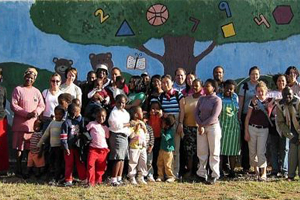
Until a few weeks ago, viral hits on the Internet mostly featured videos of dancing babies and frolicking cats.
That changed with the ALS Ice Bucket Challenge, which has quickly become an unprecedented philanthropic social media campaign. And the key for a successful campaign is not just entertainment; it has to contribute to the bottom line of a corporation or mission statement of a non-profit, said David A. Schweidel an Associate Professor of Marketing at the Goizueta Business School.
“It’s not just that it’s popular online,” Schweidel said. “It’s also contributing to increased donations.”
ALS Association spokesperson Carrie Munk said in a press release that through Aug. 21, the ALS Association received $53.3 million in donations compared to $2.2 million during the same time period last year (July 29 to August 21). These donations have come from existing donors and 1.1 million new donors to The Association.
That number had ballooned to more than $62 million just two days later.
While challenge videos have crossed generations and been shared across social media, including on Vine, Instagram and YouTube, Facebook reported that between June 1 and Aug. 17, 28 million people have posted, commented or liked a post related to the challenge, and more than 2.4 million videos have been posted.
ALS stands for Amyotrophic Lateral Sclerosis, often referred to as “Lou Gehrig’s Disease,” and is a progressive neurodegenerative disease that affects nerve cells in the brain and the spinal cord. Most commonly, ALS strikes people between the ages of 40 and 70, and as many as 30,000 Americans have the disease at any given time.
Challenges are issued between friends, asking to dump a bucket of ice water on themselves and/or donate to ALS research.
Increasing a non-profit’s donor base is similar to developing a brand within a company, Schweidel said.
“If you said to a company, ‘This campaign will increase your brand’s revenue and bring in new customers,’ I don’t know of a company that would turn that down,” Schweidel said.
In the case of a company looking to develop or expand a brand, an effective social media campaign finds new customers, and spurs existing customers to engage more, Schweidel said. Increasing brand awareness attracts new customers to a brand’s offerings, but in the case of a nonprofit, awareness helps extend the reach of the mission.
“While the monetary contributions are so absolutely incredible, and we’ll be able to really make a considerable difference in moving the mission of the ALS Association forward, the real fortunate part of the Ice Bucket Challenge is the amount of awareness it has raised for the ALS cause in general,” Munk told the International Business Times. “It puts us in a whole different ballgame to find treatments and cures for this disease.”
To measure success, Schweidel said a company must ask if a campaign had the intended effect. In the case of businesses, does it contribute to the bottom line and increasing sales and profits? For a nonprofit organizations, does it further the organization’s mission?
In the case of the Ice Bucket Challenge, Schweidel said the fundamentals that made it successful were that it’s easy to participate, people like the idea of a challenge, competition and sense of achievement and it’s short and sweet for short attention spans.
Engaging consumers also helps to activate a social network.
“There’s a social multiplier at work, with the social network growing each time that individuals participate,” Schweidel said. “Attempting to develop marketing content that goes viral is like trying to catch lighting in a bottle. What we’re seeing with this campaign is a message that has an emotional hook and that’s easy to share with others.”
While celebrities such as Bill Gates, Oprah, George W. Bush and Mark Zuckerberg have participated, the movement began between friends Pete Frates, a former Boston College baseball player, and Pat Quinn of Yonkers, N.Y., each diagnosed with ALS.
“There’s something organic about this,” Schweidel said. “It didn’t start out as a professional, polished campaign. Rather, it started with a small, regional following before it received widespread media coverage.”
About David Schweidel
David Schweidel joined the Goizueta Business School faculty in 2012. His research focuses on the development and application of statistical models to understand customer behavior, specifically in the context of customer relationship management and customer valuation. His current research explores the use of social media as a means of marketing intelligence. His research has appeared in publications including Marketing Science, Management Science, Journal of Marketing Research, and Journal of Marketing. He completed his PhD at the Wharton School of the University of Pennsylvania in 2006. Prior to joining Goizueta, he was on the faculty at the University of Wisconsin-Madison School of Business. While at the Wisconsin School of Business, he received junior faculty research and teaching awards. In 2011, he was invited to participate in the Marketing Science Institute’s biennial Young Scholar Program.











